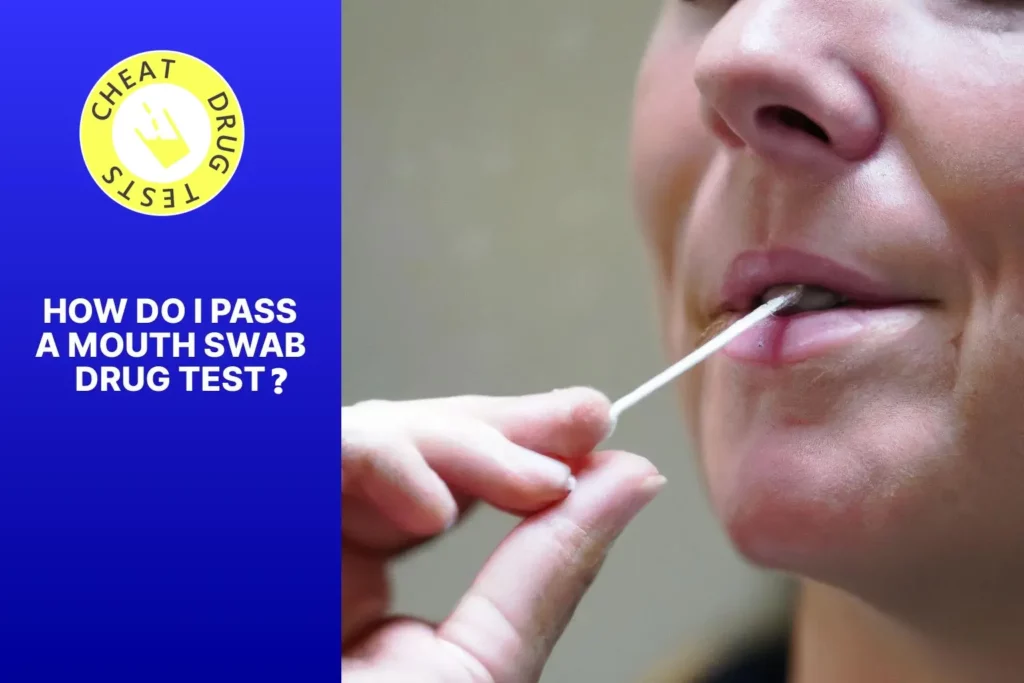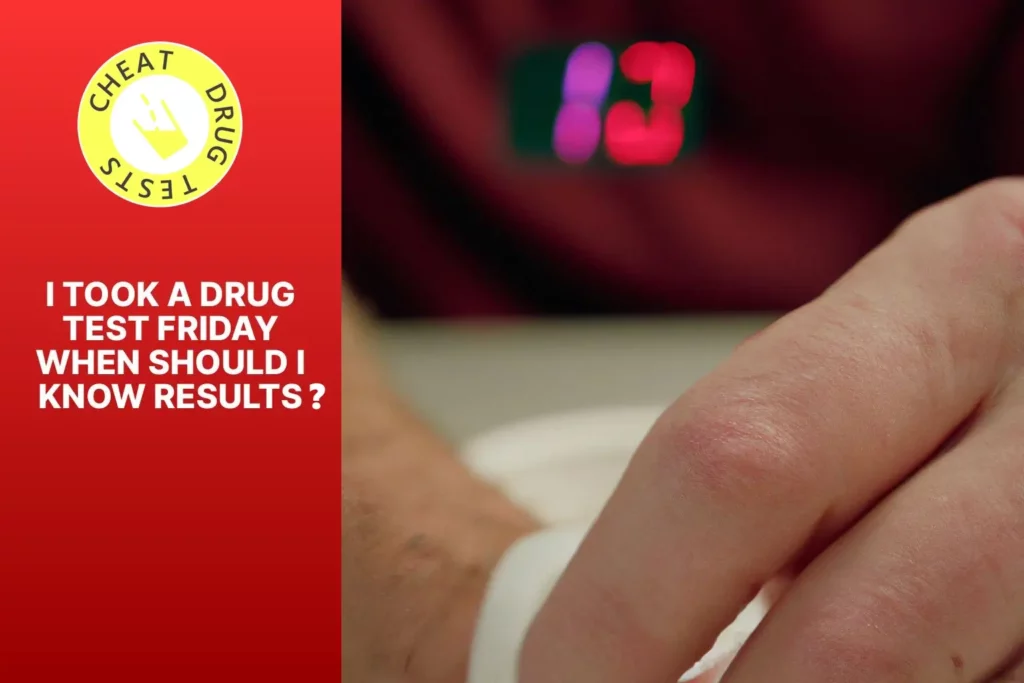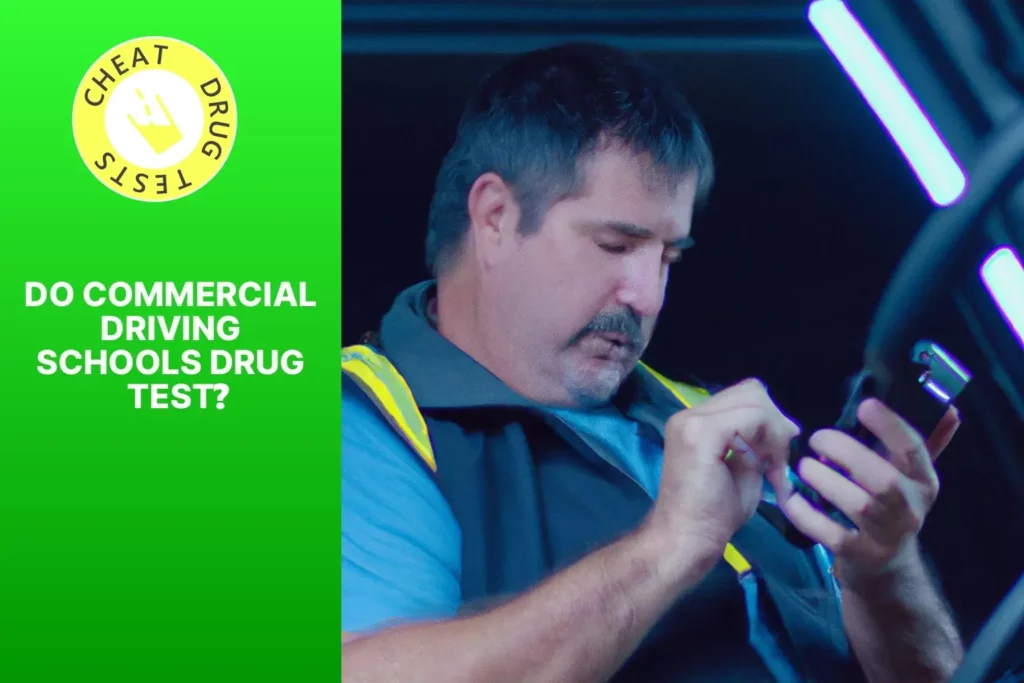CPS and drug testing—what type of test do they use? Urine tests! They’re non-invasive and easy to administer. Plus, they can detect a wide range of drugs like marijuana, cocaine, opioids, amphetamines, and benzodiazepines. Metabolites—byproducts of drugs—are also detectable. However, CPS might also use other types of drug tests in special situations. But typically, urine tests are their go-to.
Pro Tip: If you’re facing a urine test, tell them about any prescribed medications or legitimate reasons for positive results. That way, you won’t get in trouble.
What is Child Protective Services (CPS)?
Child Protective Services (CPS) is a government agency. Their job is to protect kids from abuse, neglect, and mistreatment. They investigate reports and take action to keep the kid safe.
CPS works with families and community resources. They may offer counseling and parenting classes to help families.
CPS also monitors ongoing cases. They do check-ins, interviews, and assessments. Their goal is to make sure the child is safe.
Parents and caregivers must cooperate with CPS. If they don’t, there could be legal consequences.
If you suspect a child is being abused or neglected, it is your duty to contact CPS. You can help protect kids and create a better society for future generations. Every child deserves a loving and safe environment.
The importance of drug testing in CPS cases
Drug testing is a great tool for Child Protective Services (CPS) to check parental substance abuse. It can show if a parent is suited to look after their child. This helps keep kids safe and in good places.
In addition, drug testing can give parents who have substance abuse issues a chance to get help. Positive tests can lead to programs that help with addiction and make family life better. CPS provides help and support to make it easier for parents to beat their addiction.
Urine tests are the most popular way for CPS to test for drugs. These are accurate, cheap and non-intrusive. They can detect many different substances and give a good idea of someone’s drug use history.
Remember: If you think a CPS investigation may happen, it’s important to cooperate fully with the drug testing process. This shows your commitment to your child’s safety and increases your chances of getting custody back.
Types of drug tests used by CPS
To determine whether individuals involved with Child Protective Services (CPS) have consumed illicit substances, various drug testing procedures are employed. This section focuses on the types of drug tests used by CPS, primarily highlighting the use of urine tests. Additionally, we will explore other methods employed by CPS for detecting drug use.
Urine tests
Urine tests are a key part of evaluating someone’s substance abuse history. Plus, they can detect various substances, like illegal drugs, prescription meds, and alcohol. CPS may use these tests. Here’s a look at some common types:
- Screening Test: Low cost and gets quick results. It figures out if more testing is needed.
- Confirmation Test: Confirms presence of certain drugs. Gives more reliable results, usually after a positive screening test.
It’s important to understand the importance of urine tests for people who work with CPS. By following these tests, they can show they’re committed to protecting their children’s well-being.
Don’t forget you can get accurate info through urine tests. Cooperate with CPS and follow their guidelines. This’ll help your case and avoid any bad outcomes for you or your family.
How urine tests work
Urine tests are a common method used by CPS for drug testing. It works by analyzing a sample of urine for any traces of drugs or their metabolites. This sample is collected in a sterile container and sent to a lab.
At the lab, techs use immunoassay. This is when antibodies bind to specific drugs or their metabolites, creating a reaction. This reaction can be detected through color changes or fluorescence.
Sometimes, a confirmatory test called GC-MS may be used. This technique separates and identifies compounds in the urine sample.
It’s important to know that urine tests can only detect recent drug use within a certain time frame. This period varies based on the drug and other factors. False positives can happen because of medications or dietary supplements.
Urine tests have been crucial in identifying substance abuse among individuals involved with CPS. These tests have helped ensure child safety and aid appropriate interventions.
Accuracy and reliability of urine tests
Urine tests play an important role in determining the accuracy and dependability of drug test results. Let’s delve deeper into this by looking at some key aspects related to their accuracy.
The accuracy and reliability of urine tests can be judged using various factors. These include sensitivity, specificity, precision, and reproducibility. For assessing the accuracy, several components are taken into account.
| Factors | Description |
|---|---|
| Sensitivity | The ability of a urine test to correctly detect the presence of drugs or drug metabolites. |
| Specificity | The ability of a urine test to precisely identify individuals who are not using drugs. |
| Precision | The repeatability of test results when the same sample is tested multiple times. |
| Reproducibility | The capability of different laboratories or technicians to obtain similar results when testing the same sample, guaranteeing consistent and dependable outcomes. |
It is also essential to note that proper collection and handling procedures play a huge role in accurate results in urine testing. Following standardized protocols during sample collection reduces potential errors or inconsistencies.
In terms of further details, it is worth mentioning that technological advancements have increasingly improved the accuracy and reliability of urine tests. Advanced laboratory equipment, comprehensive research studies, and strict quality control measures have all contributed to improved precision in detecting drugs in urine samples.
Pro Tip: To make sure of accurate results from urine tests, it’s essential for individuals undergoing such assessments to follow appropriate instructions regarding sample collection and storage. This includes adhering to prescribed time periods for sample submission and preventing any possible contamination that may alter the outcome.
By knowing these aspects, professionals can trust urine tests as a useful tool in drug screenings with increased trust in their accuracy and dependability across a variety of contexts.
Common substances detected by urine tests
Urine tests are often employed by CPS to detect different substances. These tests give valuable insights into a person’s drug use history. Let’s explore the most common substances that can be found through urine tests.
- Marijuana: This is a widely-used illicit drug, and THC (its active compound) can be tracked for up to 30 days post-use.
- Cocaine: Its metabolites can be traced in urine tests up to 2-3 days post-use.
- Opiates: This category includes heroin, morphine, and codeine. Urine tests can detect these substances up to 2-3 days post-use.
- Amphetamines: Methamphetamine and Adderall fall under this category. Urine tests can detect amphetamines for 2-4 days post-use.
- Benzodiazepines: These drugs are usually prescribed for anxiety and insomnia. Examples include Xanax and Valium. Urine tests can detect them for 3-7 days post-use.
Other substances like barbiturates, PCP, and alcohol may also be found. But they might not appear in routine screenings unless there is a reason to believe they have been used.
If you or someone you know is facing a CPS urine test, it’s important to know which substances could be detected. This knowledge can help you get ready and make the right decisions for your health and well-being. Knowing is power, and it gives you the ability to take charge and make the best decisions for yourself and your loved ones.
Other types of drug tests used by CPS
Types of drug tests used by CPS vary depending on the situation and the child’s age. Urine tests are most common, but CPS may also use other methods. These include:
- Hair Follicle Testing (detects substances up to 90 days)
- Saliva Testing (detects recent use up to a few days)
- Blood Testing (for urgent results)
- Sweat Patch Testing (for ongoing use)
It’s important to note that each type has its advantages and limitations. To ensure reliable and accurate results, there are some suggestions for CPS:
- Training staff on drug tests and their interpretation.
- Establishing guidelines for choosing appropriate tests.
- Consulting with toxicologists on the best testing methods.
- Ensuring confidentiality and privacy with samples.
Following these steps can enhance CPS drug testing practices and contribute to better decision-making for child safety and welfare.
Hair follicle tests
Hair follicle tests are a type of drug test used by CPS to detect substance abuse. It involves taking a sample of hair and analyzing it for drugs. See the table below for an overview:
| Hair Follicle Tests | |
|---|---|
| Sample: | Hair strands |
| Detection Period: | Up to 90 days |
| Method: | Screening |
Hair follicle tests detect drug use over a long period, and are difficult to tamper with. To get accurate results, these tips should be followed:
- Use certified labs: This ensures accuracy and reliability in the analysis.
- Follow collection procedures: Wear gloves, use sterile tools, and keep the chain of custody.
- Educate and train: Professionals need proper knowledge to reduce errors and get accurate results.
CPS can use these tests to identify long-term drug use and provide necessary help. Remember that accuracy is key in these types of tests.
Saliva tests
Saliva tests are popular with CPS (Child Protective Services). They collect a saliva sample and analyze it for drugs. Saliva tests are non-invasive and easy to do. Here is what you need to know:
Sample Collection: Use a swab to get a saliva sample.
Detection Window: Saliva tests can detect recent drug use, usually within days or weeks.
Accuracy: Saliva tests are accurate for many drugs like marijuana, cocaine, amphetamines, opiates, and benzodiazepines.
Ease of Use: Saliva tests are convenient and don’t need special training or equipment.
Non-Invasiveness: Saliva tests are not intrusive or uncomfortable.
Pro Tip: Follow chain of custody protocols for accurate results that hold up in court. Document the collection process and keep the sample secure.
Pre-employment drug screening in CPS
To ensure a safe and drug-free environment within Child Protective Services (CPS), pre-employment drug screening plays a crucial role. Learn about the purpose of this screening and discover the various types of drug tests used in the process. Understand how CPS conducts pre-employment drug screening to ensure the well-being of children and the effectiveness of their workforce.
Purpose of pre-employment drug screening
Pre-employment drug screening is essential for CPS. It helps to keep potential employees free from drug use, creating a secure and supportive setting for the kids they serve. Drug testing identifies those who may be misusing drugs, allowing CPS to make informed decisions about hiring. This process also discourages those with substance abuse issues from applying, decreasing the chances of any drug-related incidents.
In addition to child safety, pre-employment drug screening supports accountability and integrity within CPS. It establishes clear expectations about drug use and shows the organization’s commitment to protecting kids. For potential hires to go through this crucial step, they must understand its importance. By acknowledging how their sobriety can impact children’s lives, they are motivated to prioritize their wellbeing.
By understanding the role of pre-employment drug screening in CPS, applicants can approach this requirement with enthusiasm. Recognizing its purpose in safeguarding vulnerable children and maintaining a trusting environment will enable them to embrace this step in becoming part of the CPS team. Together, we can protect every child by preventing risks connected to substance abuse among employees.
Types of drug tests used in pre-employment screening
Pre-employment drug screening is a key part of the hiring process for lots of companies. It helps make sure work places are safe and drug-free. An important aspect of these tests is to use different kinds to detect any substance abuse by potential workers.
Let’s look at the types of drug tests used in pre-employment screening:
| Test Type | Description |
|---|---|
| Urine Drug Test | This is one of the most popular tests. It can usually detect recent drug use over the past few days. |
| Hair Drug Test | Hair tests can detect drug use for up to 90 days. |
| Saliva Drug Test | Saliva tests are non-invasive and can usually show recent drug use. They are often used to see if someone is impaired. |
| Blood Drug Test | Blood tests are accurate and can detect both recent and chronic drug use. They are often used in court cases or when results are needed quickly. |
Apart from these popular drug tests, there are other methods too. These include sweat patch tests which can show long-term drug use, and breath alcohol tests which measure how much alcohol someone has had.
To make sure pre-employment drug testing is effective, there are some suggestions to consider:
- Make a comprehensive policy: Having a clear policy which outlines the purpose, procedures, consequences, and confidentiality aspects of drug testing will help make sure everyone knows what is expected.
- Use certified labs: Accredited laboratories which follow strict quality control measures will give accurate results and keep the process trustworthy.
- Educate employees: Raising awareness among current workers about how regular drug testing keeps a safe work environment can encourage people to follow company policies.
- Do random testing: Combining random testing with pre-employment screening can stop substance abuse and keep work places drug-free.
By doing these things, companies can have a strong pre-employment drug screening process which not only protects employees but also protects the organization.
How pre-employment drug screening is conducted in CPS
Pre-employment drug testing in CPS is crucial for safety and efficiency. It involves examining potential employees to see if they have substance abuse issues that could affect their job performance. Here’s a look at the steps:
- The candidate fills out a consent form for drug testing.
- There is designated supervision during sample collection, usually urine.
- Samples are sent to a certified lab for analysis.
- Results are reviewed by medical professionals.
- Confidentiality is kept throughout.
CPS follows legal authorities and industry standards to ensure fairness and accuracy. Plus, there’s extra emphasis on confidentiality. All results are handled by medical pros who uphold strict privacy protocols.
An example of the importance of pre-employment drug testing in CPS – a few years ago, this process revealed that one candidate had been using illicit substances. Thanks to the procedure, CPS was able to take the right steps to keep the workplace safe.
Conclusion
When it comes to drug testing in CPS cases, urine tests are usually the go-to method. This kind of test is also commonly used for pre-employment drug screening. Urine tests are able to detect a wide range of substances, and are considered to be both precise and dependable.
CPS often choose urine tests as they give a complete overview of a person’s substance use. By studying a person’s urine sample, experts can find out if drugs have been consumed in a certain time frame. This information is critical in deciding a child’s safety and welfare in CPS cases.
The urine test has many other benefits too. It is non-invasive, easily administered and can be done on-site or at a designated facility. The testing process is also swift, providing results in a short amount of time.
If you’re involved in a CPS case that requires drug testing, you must follow all requests and deadlines. Failing to do this could cause serious issues for your case and might even result in your child being taken away from you.
Frequently Asked Questions
FAQ 1: What type of drug test does Child Protective Services (CPS) use?
Child Protective Services typically uses urine drug tests to screen individuals involved in child welfare cases. These tests are effective in detecting various types of drugs and provide reliable results.
FAQ 2: How does a urine drug test work?
A urine drug test involves collecting a urine sample from the individual being tested. The sample is then analyzed for the presence of drugs or their metabolites. The results determine whether the person has used drugs recently.
FAQ 3: Can CPS require a drug test as a part of pre-employment screening?
No, CPS cannot require a drug test as part of the pre-employment screening process. Drug testing policies may vary in different regions, but typically pre-employment drug screening is only conducted for certain positions in specific industries.
FAQ 4: What drugs can be detected in a urine drug test?
A urine drug test can detect a wide range of drugs, including marijuana, cocaine, opioids, amphetamines, benzodiazepines, and more. The test can identify recent drug use within a specific timeframe depending on the drug.
FAQ 5: Can CPS drug test a parent without their consent?
In general, CPS cannot conduct a drug test on a parent without their consent unless there is a court order or the parent is under legal investigation. However, laws vary by jurisdiction, so it’s important to consult local regulations for specific information.
FAQ 6: How accurate are urine drug tests?
Urine drug tests are highly accurate when conducted correctly. However, it’s essential to use certified laboratories and follow proper protocols to ensure accurate results. False positives or negatives can occur due to various factors, but reliable testing procedures minimize these errors.
Cheat Drug Test articles & impartial reviews are funded by affiliate commissions, at no extra cost to you, our awesome readers. Learn more



